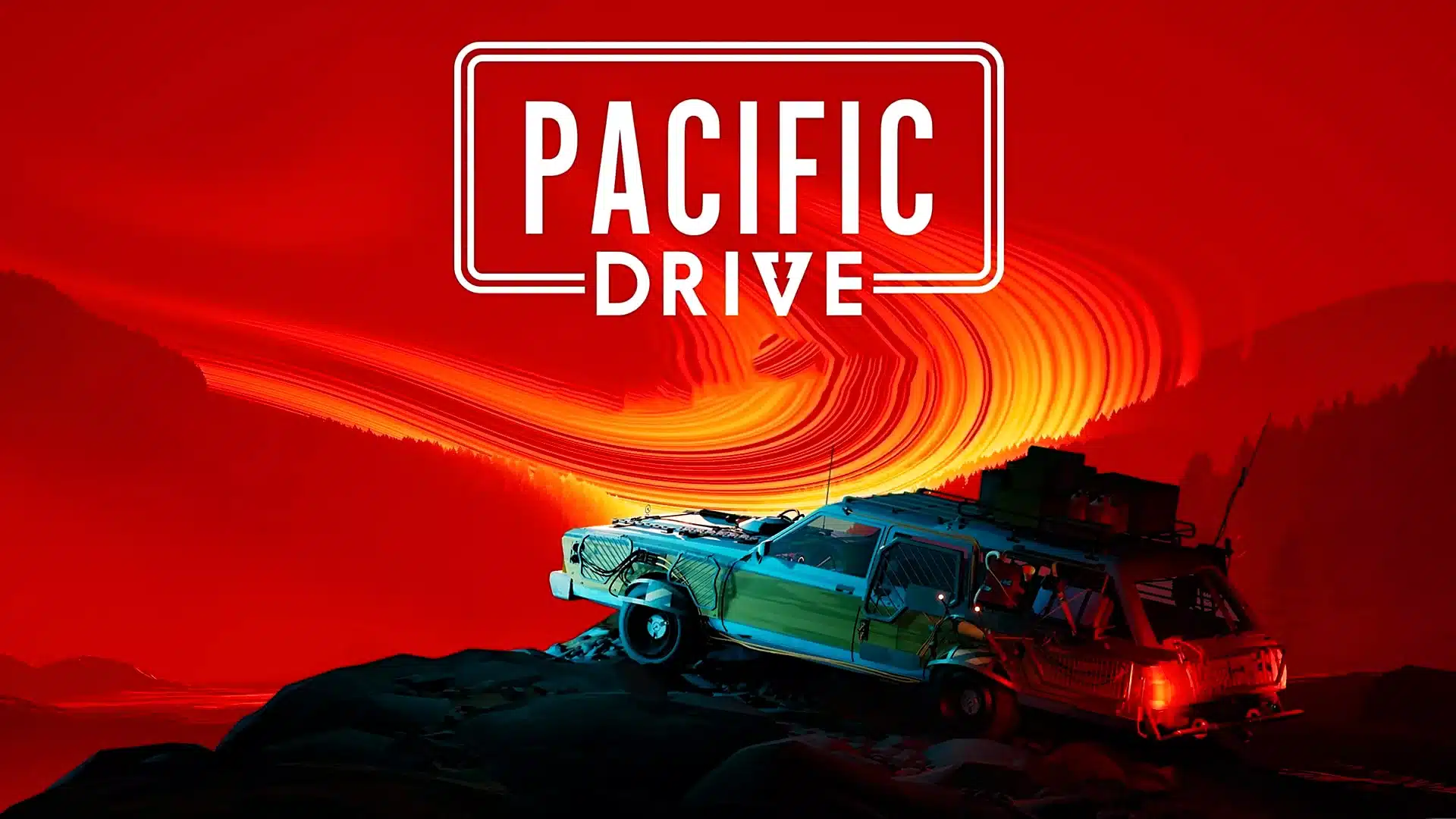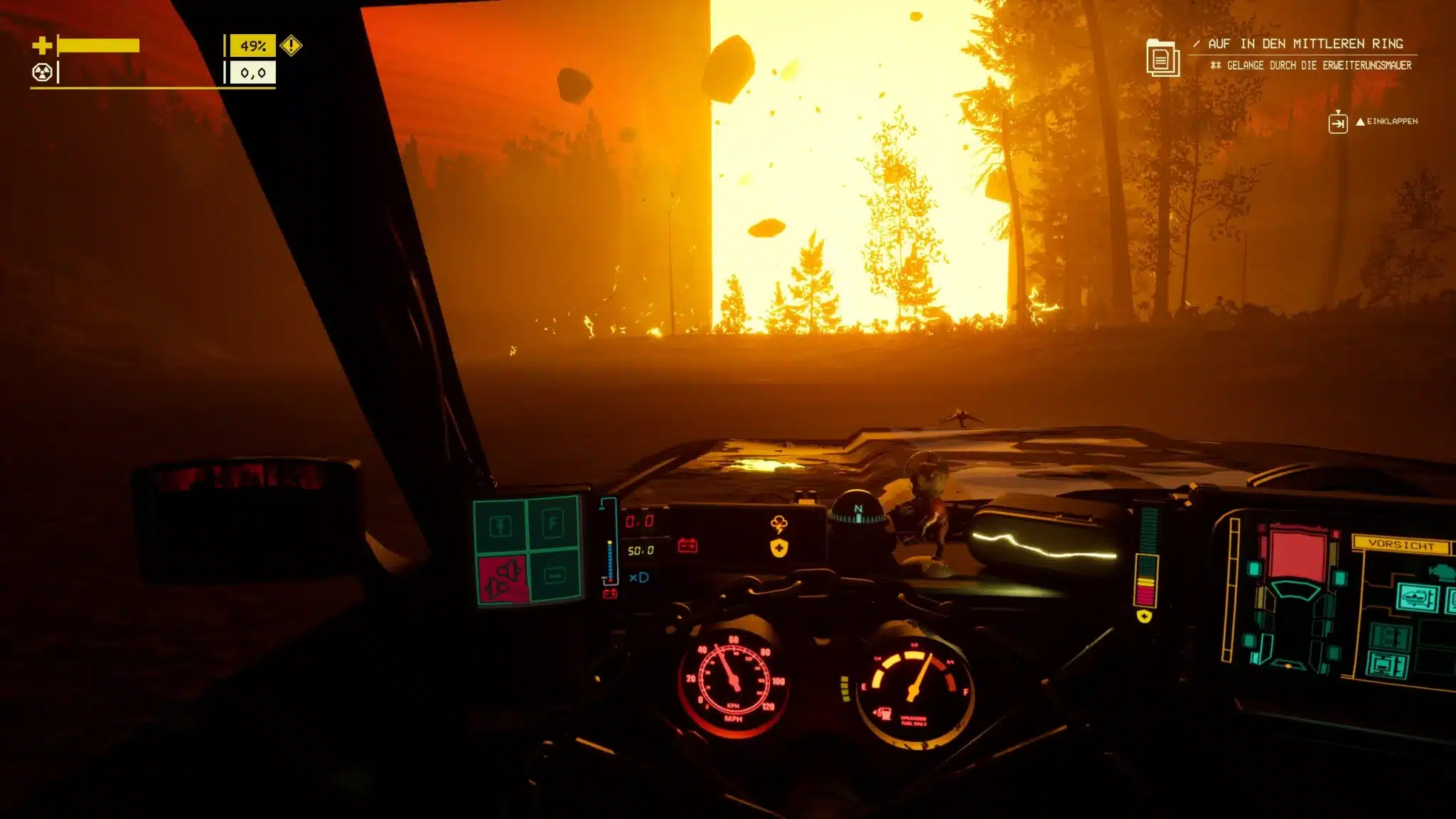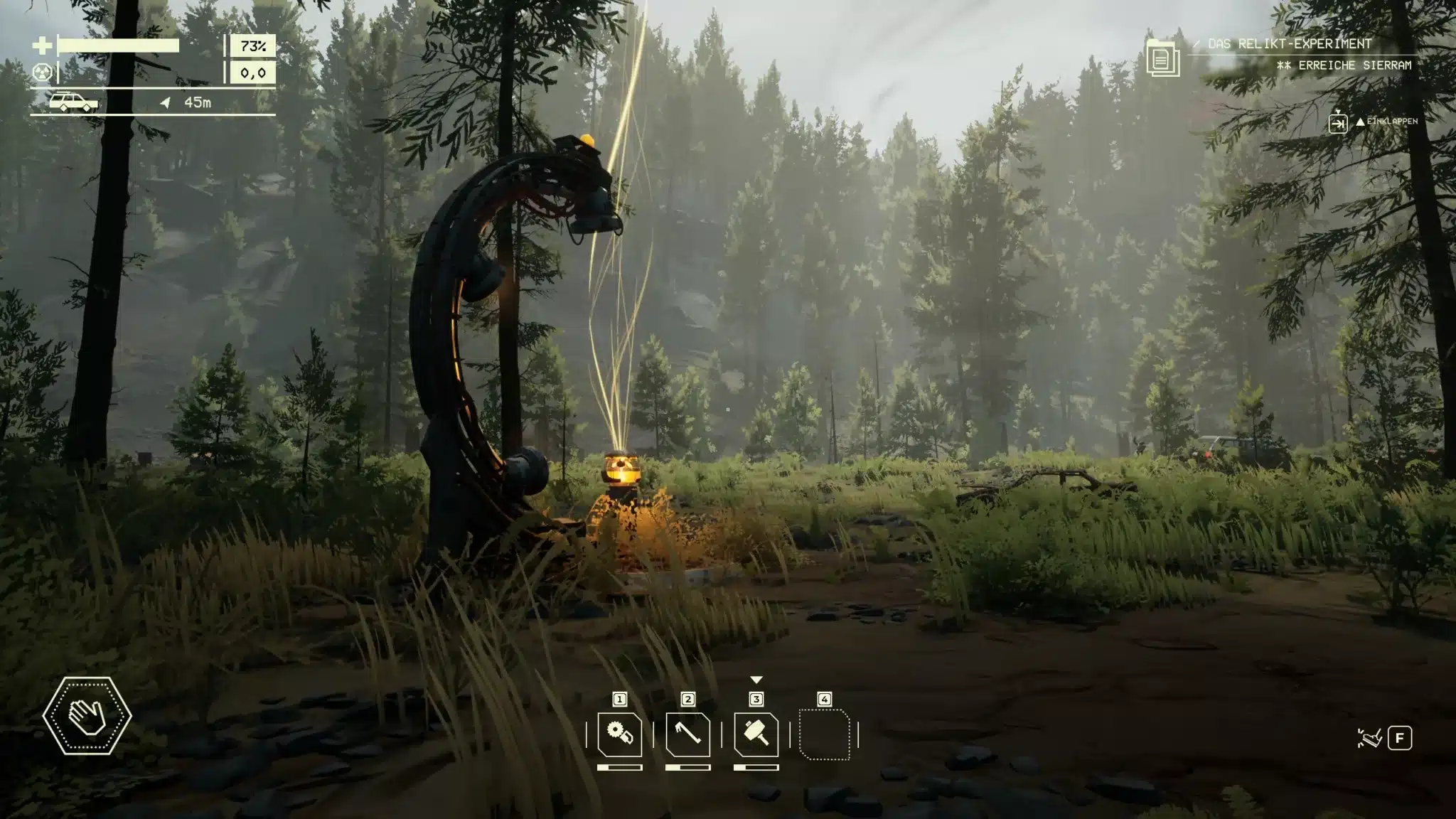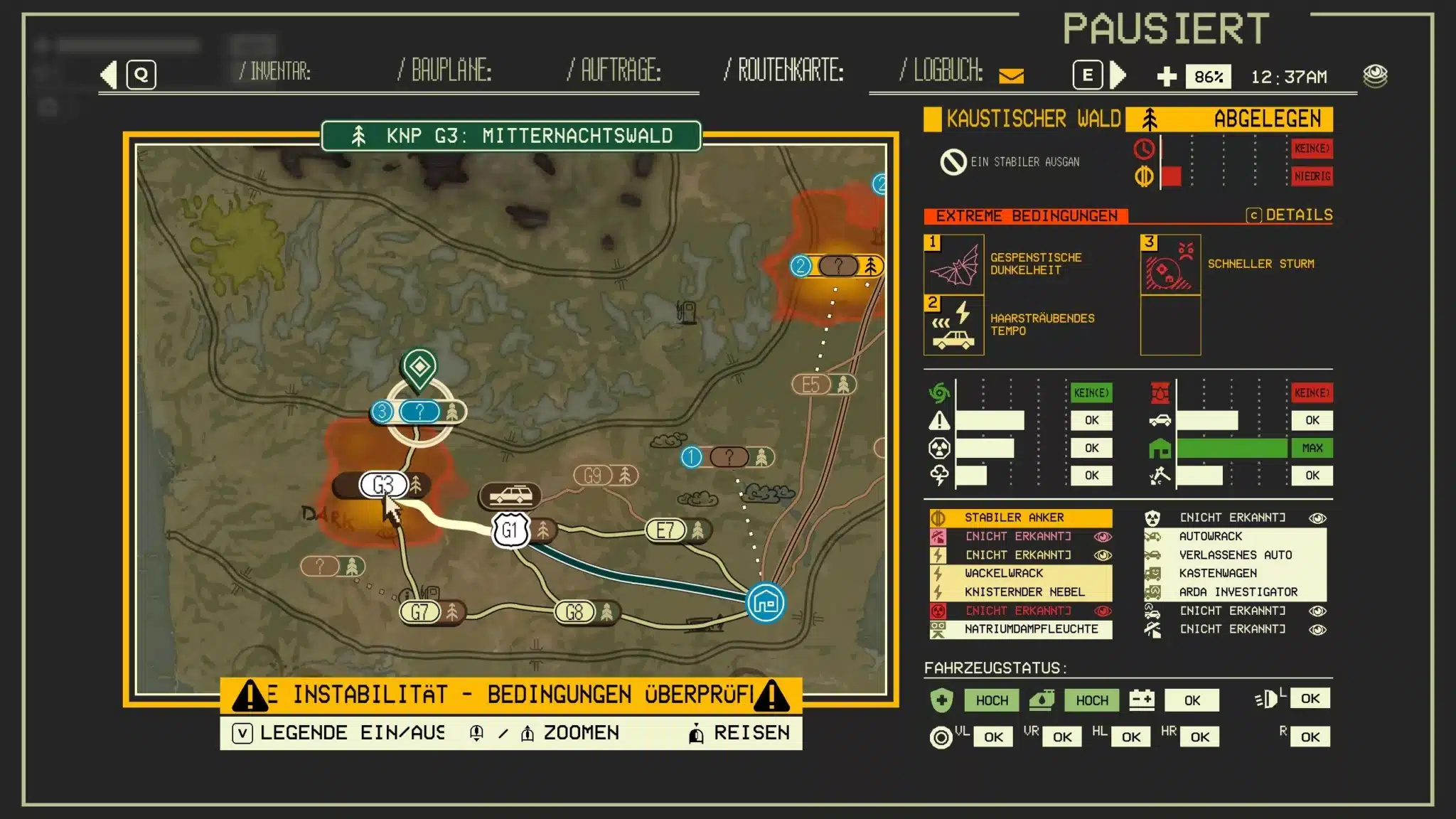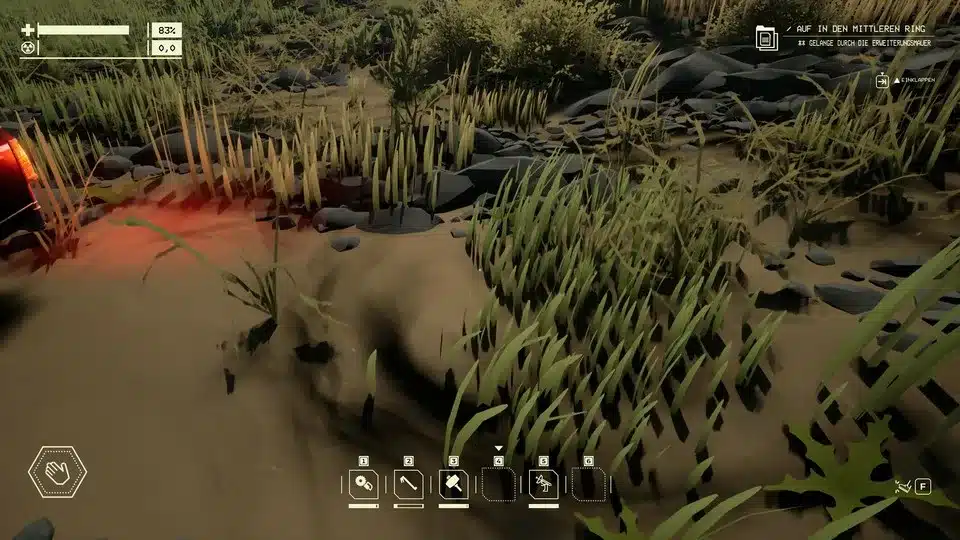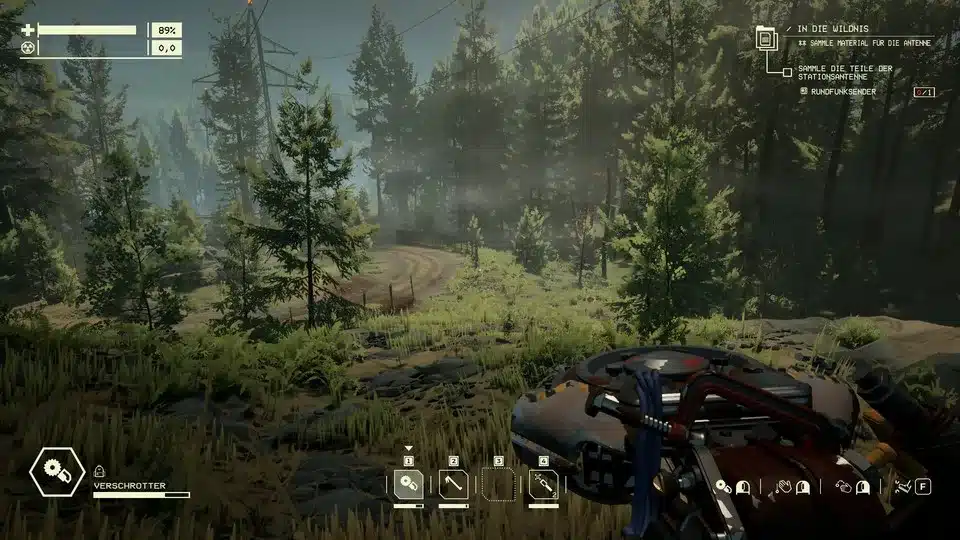Pacific Drive sends you into a rollercoaster of emotions, on four wheels. Because the most innovative survival game of the year is also likely to be one of the most talked about
In real life, visits to the garage have a tendency to be dramatic: I drop my car off in the morning for a supposedly minor issue or even a routine inspection and am initially in good spirits. As the day progresses, I look anxiously at my cell phone and await the “We’ve found something wrong with the car” call. As soon as the phone rings, I’m plunged into financial disaster. Drama
Pacific Drive is a completely different story. When I reach my home garage and workshop in the survival game from Ironwood Studios, I feel happy and safe. It’s the place where I regenerate after an exhausting tour into the restricted area and unlock improvements for my car with my loot. Because in Pacific Drive, the drama takes place outside the garage.
Tried out a preview version of the unusual car survival game two months ago. Basically, I liked the concept and the implementation, but the balancing and some of the game mechanics still gave me a lot of stomach ache. My verdict after 20 hours in the test version is much more positive.
With the station wagon through the restricted zone
Ah, the 90s! The world is changing and borders are opening up. Well, except for the high and thick walls of the Olympic Exclusion Zone on the Olympic Peninsula in the northwest of the USA. The zone on the Pacific coast remains a restricted area. At the end of the 1940s, a groundbreaking technological invention was made there. However, after reports of missing persons and supernatural events become known, the government closes the area to the eyes of the world
This is the exciting starting point of Pacific Drive. In the guise of a speechless and disembodied main character, I think it’s a good idea to go for a spin on the outside of the wall in 1998. What I want to do there is unclear: at the beginning, my character holds a few mysterious documents in front of his first-person view that suggest some kind of connection to the zone. But it could just as easily be a “I don’t need to ask for directions!” travel preparation from the age before navigation systems.
After just a few minutes of driving, an anomaly swallows me up. I wake up amidst the floating parts of my car and run for my life in fear. In the distance, I spot a rickety estate car – the quintessential family coach – and get in. On the way, the two scientists Francis and Tobias radio me, explaining something about a relic that the car supposedly is, and direct me to the workshop of the always grumpy Oppy. Although she’s not at home, she doesn’t miss the opportunity to take out her bad mood and hangover on me over the radio.
Pacific Drive has already established its basic structures at this point: I am alone with my car in a very hostile, cordoned-off zone. The garage serves as my hub into the level instances as well as a storage and tuning center. The three supporting characters give me radio targets in increasingly dangerous regions for which I have to improve my car. This is the simple motivation mechanic of Pacific Drive – and it works.
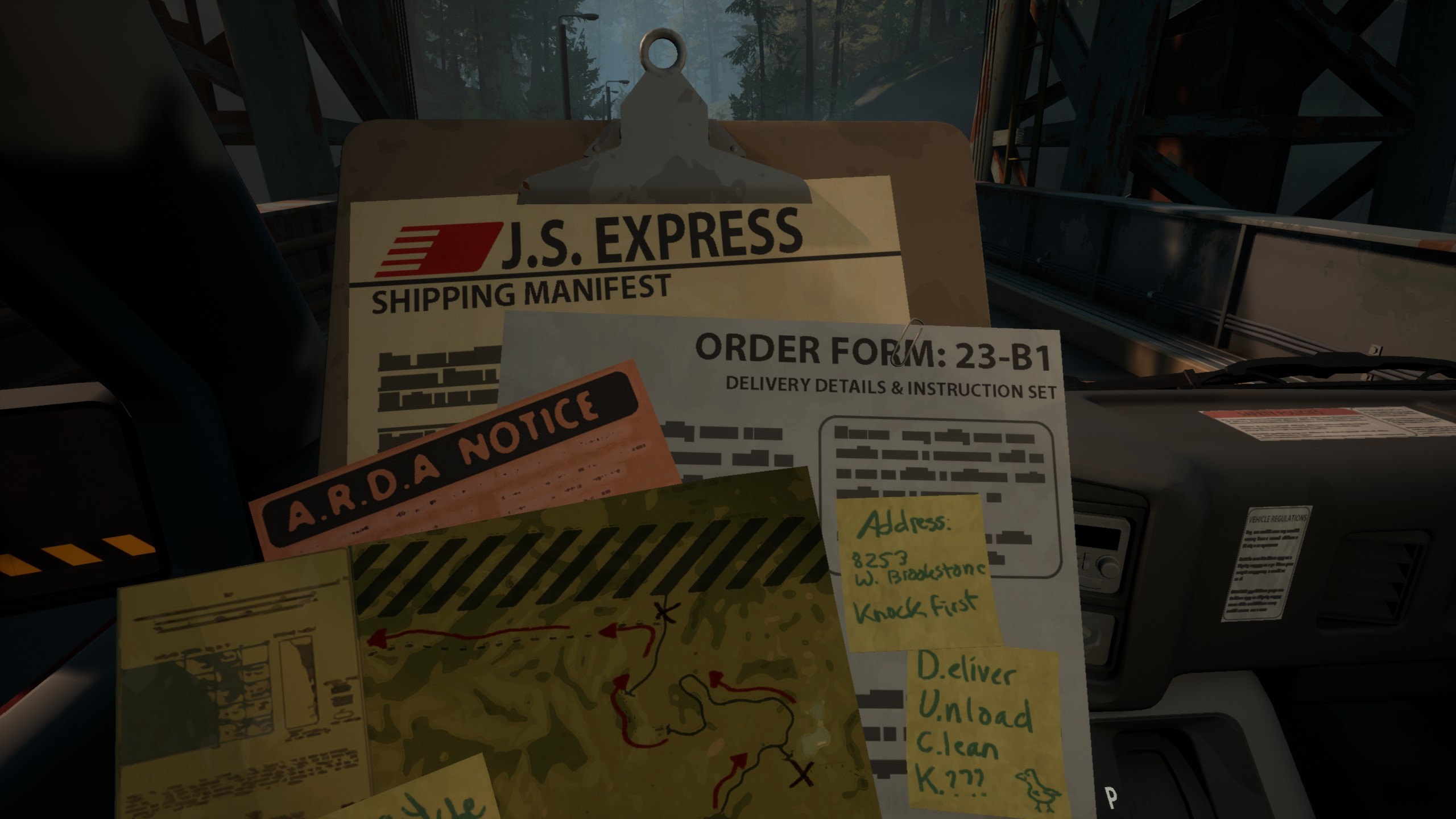
Look under the hood: How does Pacific Drive play?
Pacific Drive doesn’t tell you much at first. The mute main character initially irritates me just as much as the fact that she apparently just accepts the strange anomalies. Especially as the anomalies appear both as supernatural (?) environmental phenomena and as eerie creatures that hunt me down.
But by traveling the zone, scanning anomalies and structures with my scanner, listening to audio logs and listening to the really entertaining radio messages from the English speakers, I learn a lot about the lore. This subtly underpins my excursions into the Zone, as I find myself wanting to know more – both about the fates of the people here and about the Zone as a whole.
This is not a classic open world. Quite a wasted opportunity, because in a survival game with a car as a companion, this would have been more than appropriate. Instead, the developers have opted for roguelike gameplay: I choose my next destination on a map in the workshop. There I can also see what potential dangers and types of loot await me. I then get into my car, leave the workshop in the direction of the loading screen and arrive at the level instance.
The so-called ARC device, a technical magic machine, is always on my passenger seat It enables me to return to the workshop via portal jump and must be fed with energy from so-called anchor nodes. I also need the latter to unlock improvements or research blueprints in the workshop.
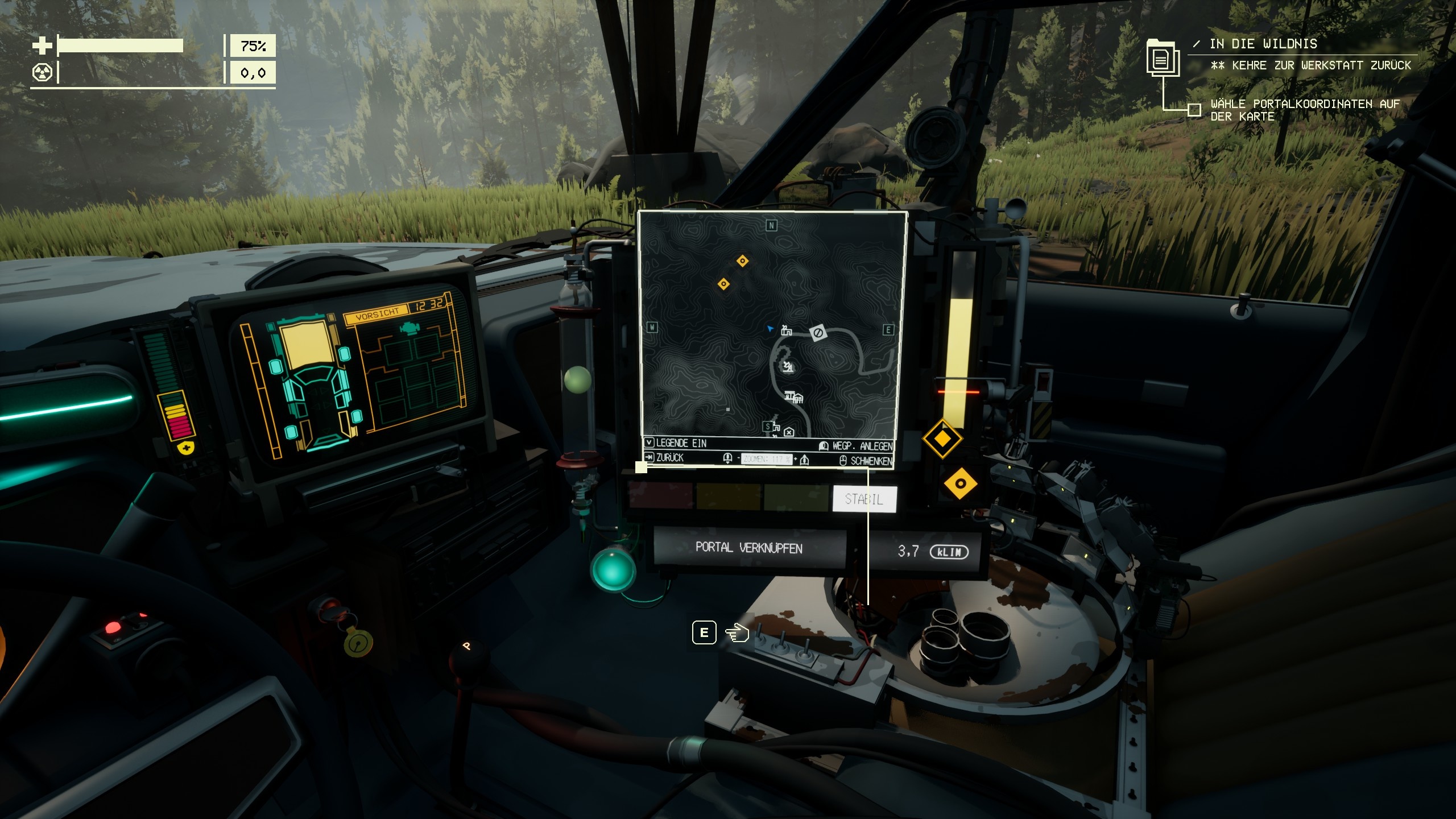
When I arrive at a level instance, I can see the course of the road, interesting places, energy nodes and the return portals on the rudimentary map of the ARC device. The level instances are randomly generated and each of the large areas in the zone has its own visual peculiarities, which nevertheless quickly become repetitive.
With a few exceptions, every level instance is the same: arrive, travel to points of interest, collect loot, get energy nodes, activate the portal and escape before the approaching storm destroys everything. Exceptions include story missions with a fixed goal and instances without their own portal. Here I have to leave the world via a road to activate a portal on the next randomly generated map
Stress-free exploration? You can (almost) forget it!
In a game that wants to convey the fascination of exploring an unknown world with a station wagon, I actually find instanced levels and strong pressure to act rather inappropriate. We’re not talking about a powerful speedster here, but the car that Clark Grisworld used to chug around the USA in the 1980s.
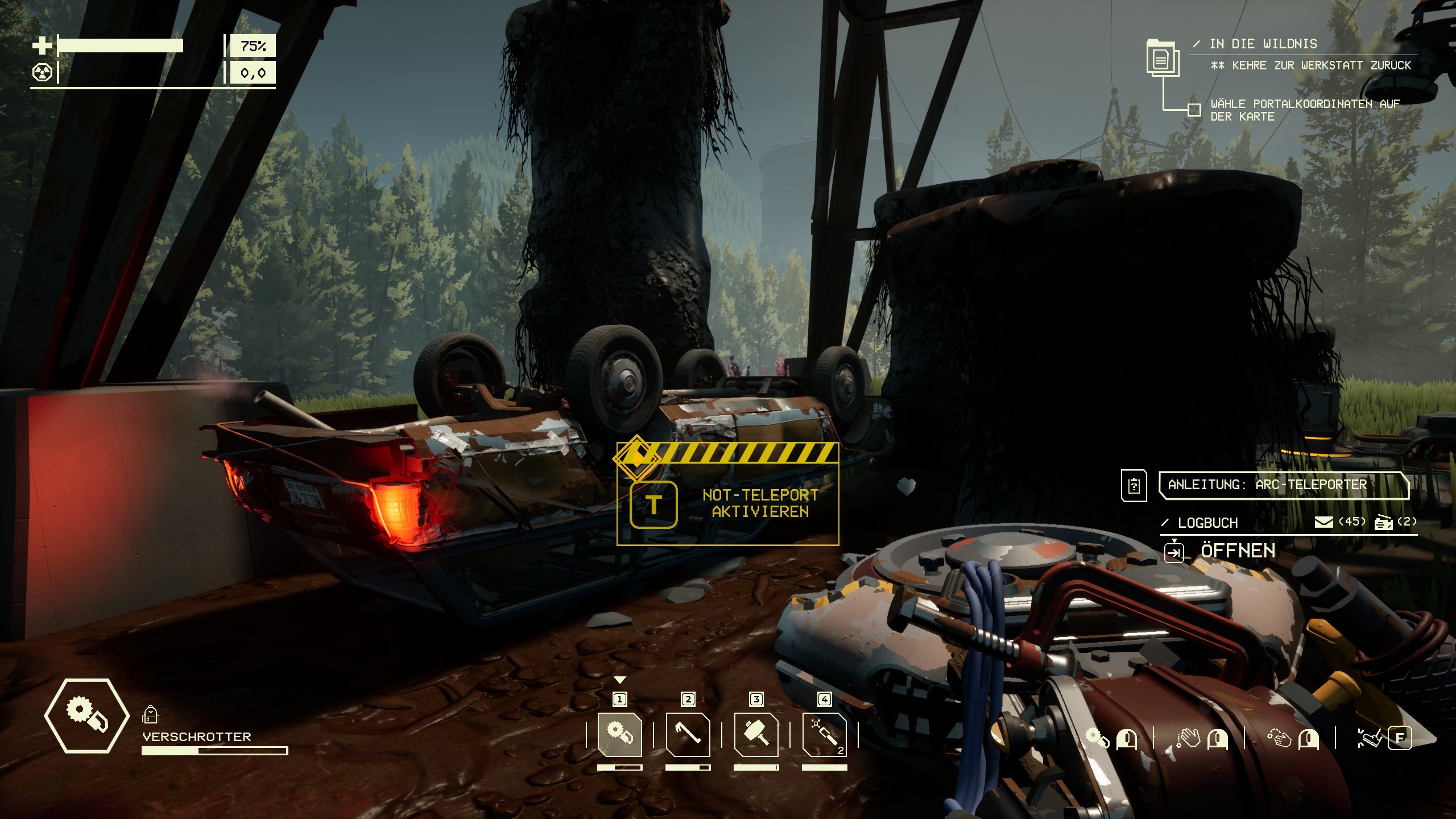
If you’re hoping for exploration in Pacific Drive, you’ll definitely be disappointed by the game. As soon as I get to the level instances, I drive to the locations marked on the map, get out, bag everything and get the hell out of there. Because after 15 to 20 minutes, the storm is definitely coming.
Because I have to gather the energy for the return journey through the portal at the start of a level instance, I always feel stressed. I simply don’t like having to collect two or three items in a level before I can even get away again – without having collected a single improvement.
When I die in Pacific Drive, it’s not the end. Because my car is the aforementioned relic, it automatically teleports me back to the garage when I die. However, I am in a desolate state, without any loot and with a severely depleted inventory. So if I fail a level, I’m practically worse off than before.
The game gives me the opportunity to get primitive plates and doors in the workshop. But if I’m already having problems with the better steel equipment, trying again with worse equipment doesn’t necessarily make me optimistic.
What’s more, I’m not allowed to save during the instances. When entering the zone, there is an automatic save status (which also overwrites my last used manual safe slot) – that’s it. The only thing to do then is to cancel the tour (and have less) or continue. Or you can do as I do and always save manually to two slots before a tour
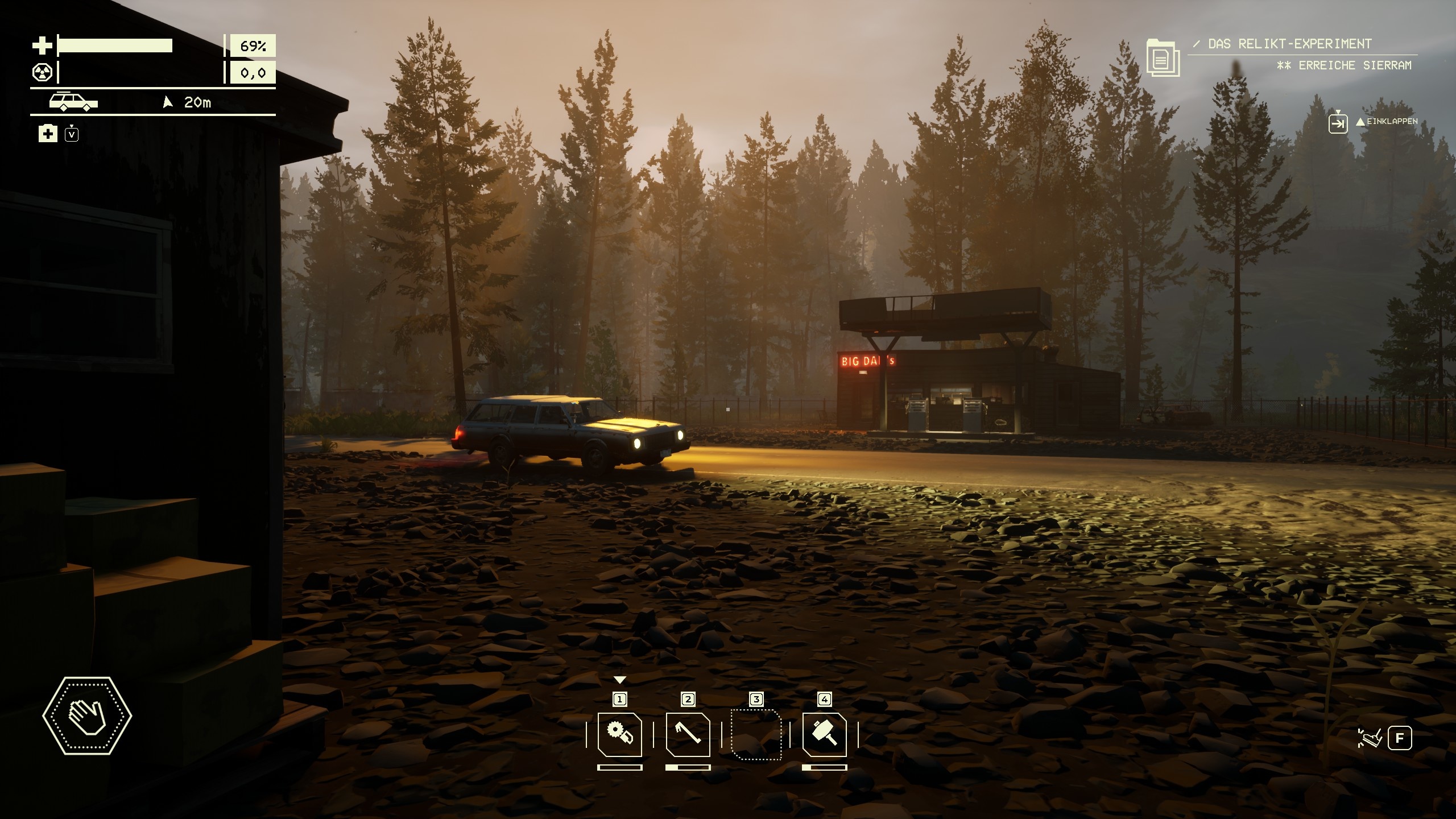
Calculable risk
At least Pacific Drive gives me an idea of what to expect on my next road trip. When planning the route, I see information about the modifiers that apply in the instance. These range from a quick storm (in which case the stress factor kicks in immediately after the start) to a very dark night (in which I really can’t see anything without light) to no storm at all with the “Endless stability” modifier. The latter in particular saves Pacific Drive from becoming an annoying frustration-fest
If you only choose stable instances at the beginning, you’ll quickly have a garage full of loot, unlock important improvements such as steel parts and off-road tires and start the adventure in a completely different way than someone who becomes an unthinking plaything of the zone.
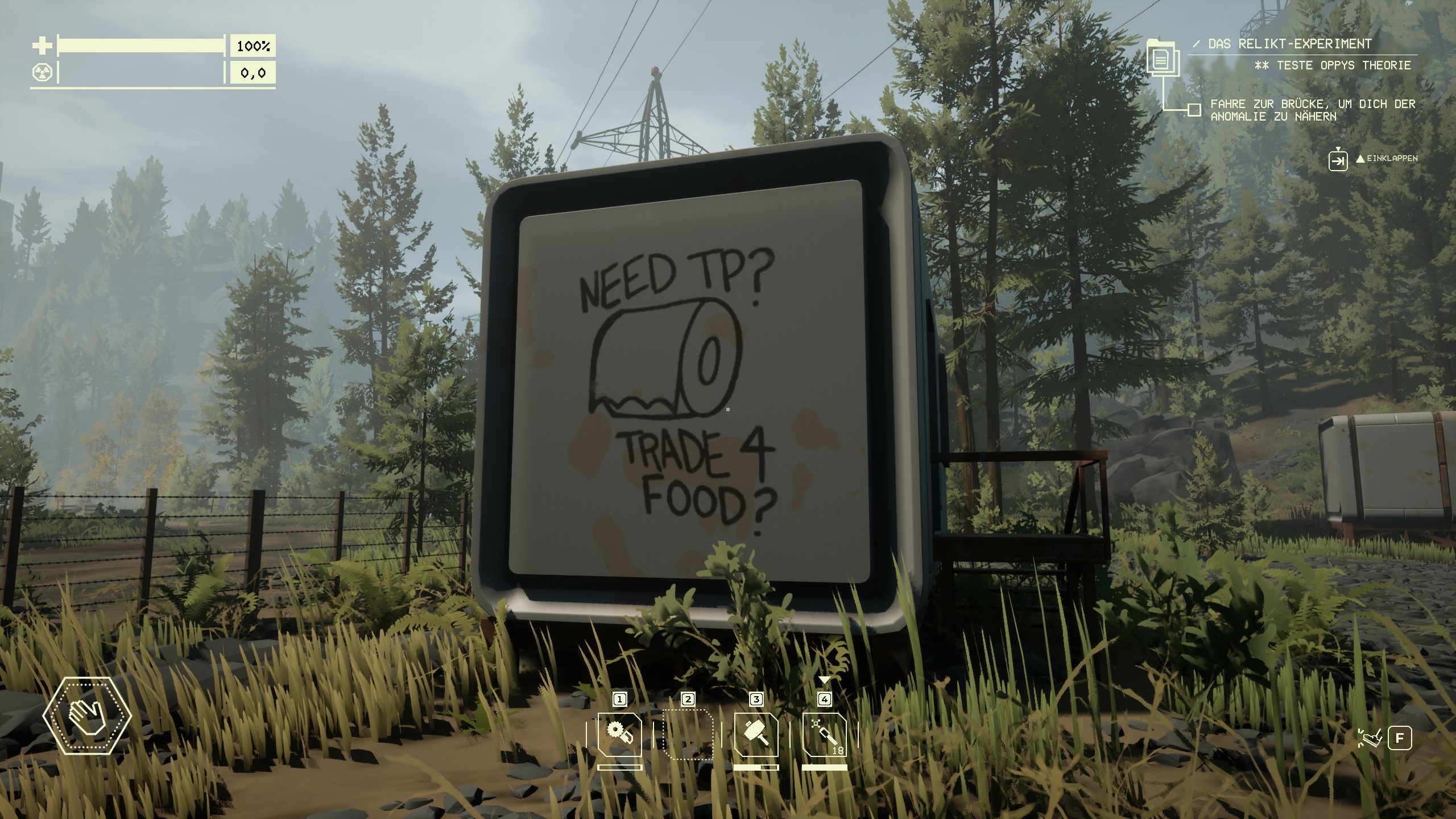
In my opinion, it should be written in large letters on the garage door before the exit to gain experience in stable regions first. But once I’ve chosen a route on the map, I’m stuck with it. If it doesn’t have endless stability – bad luck. I can no longer try the others in this cycle (save beforehand!)
Pacific Drive also puts a few avoidable obstacles in the way of fiddly controls. In particular, the unnecessarily complicated inventory management quickly gets on your nerves. When driving, you also have to juggle countless buttons, but on the other hand, the atmosphere definitely benefits from the fact that you can select lights, windshield wipers, gearshift and co. directly in the cockpit, just like in a simulation
Frust as a reliable co-driver
It’s these details that show how much love goes into Pacific Drive. I’m developing a very strong bond with my station wagon, I’m obsessed with improving its parts and I’m always giving it a new coat of paint, including stickers and interior decorations
The tuning, workshop upgrades and unlocking improvements for my character, such as a larger rucksack, are motivating and help to overcome some moments of frustration. Because the risk of frustration is always present. For example, if I end up in a scenario with the “pitch-black night” modifier, I absolutely need my lamps.
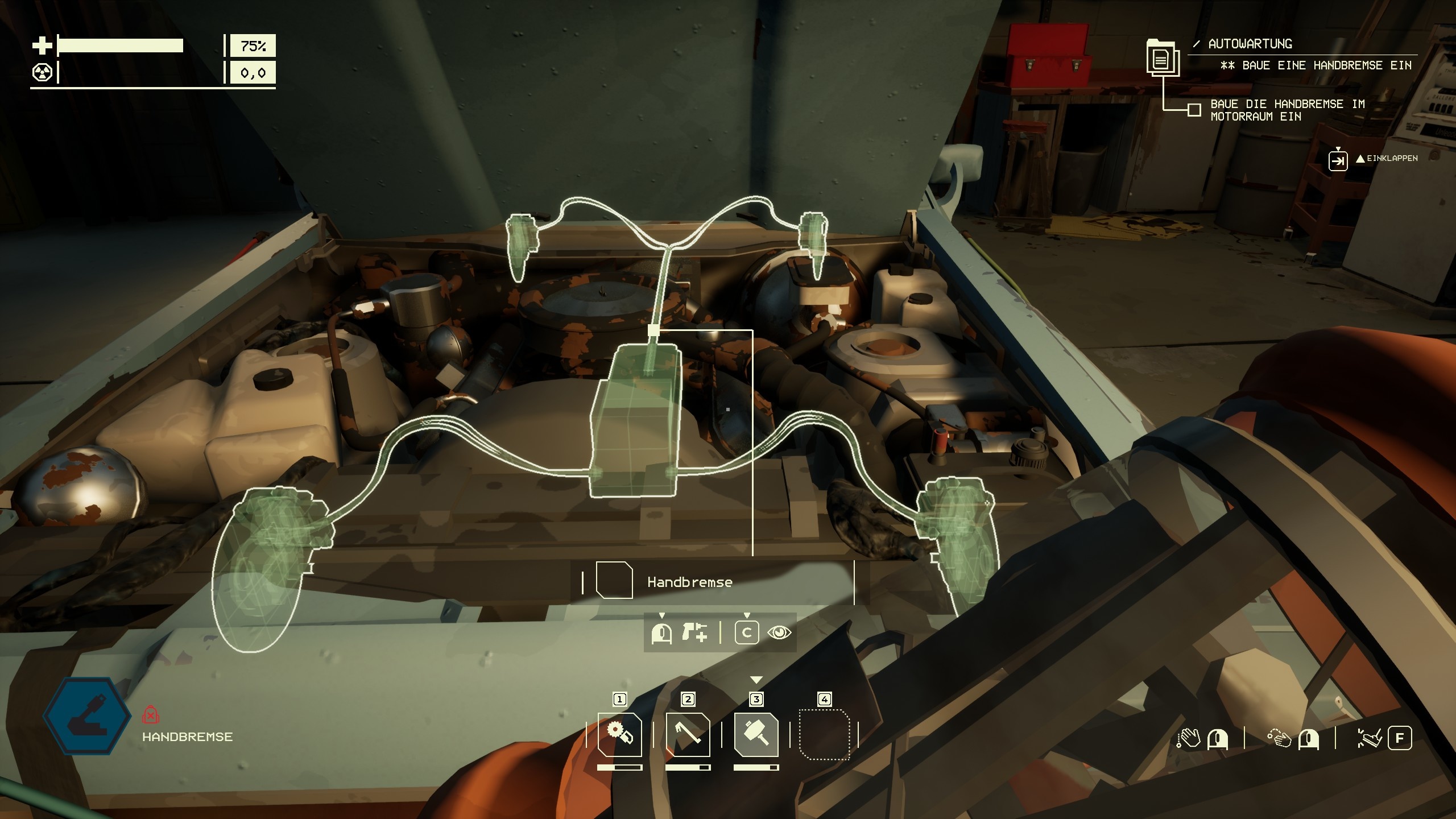
If they break down due to a driving error or the battery is flat and I don’t have any spares, I can forget the round. Nothing against a tough challenge, but in Pacific Drive all it takes is one careless moment to turn what should be an easy haul with a good starting position into a frustrating end.
An example: My car has steel parts, floodlights on the sides and a full battery. I enter an instance with a pitch-black night, stay on the road and look for the exit. Suddenly, my car starts to lurch because I hit the edge of an anomaly. I just about manage to stay on the road, but now a kidnapping creature sees me. It extends its magnet and drags me along – unfortunately straight down the embankment. The lights are broken, I’m wedged between trees. The screen is pitch black and suddenly the warning tone for the storm sounds. I immediately want to bite into the tabletop.
And yet I start my next exploration tour shortly afterwards. Because with every trip, I learn to read Pacific Drive better and … well … avoid dangers better. Because the next upgrade is already within reach. And, of course, because with every trip I unravel the mystery of the contaminated zone a little bit more.
However, I fear that many will pull the handbrake in frustration before then. And I hope that developer Ironwood will deliver updates that at least make the start of the game a little smoother and explain the connections better
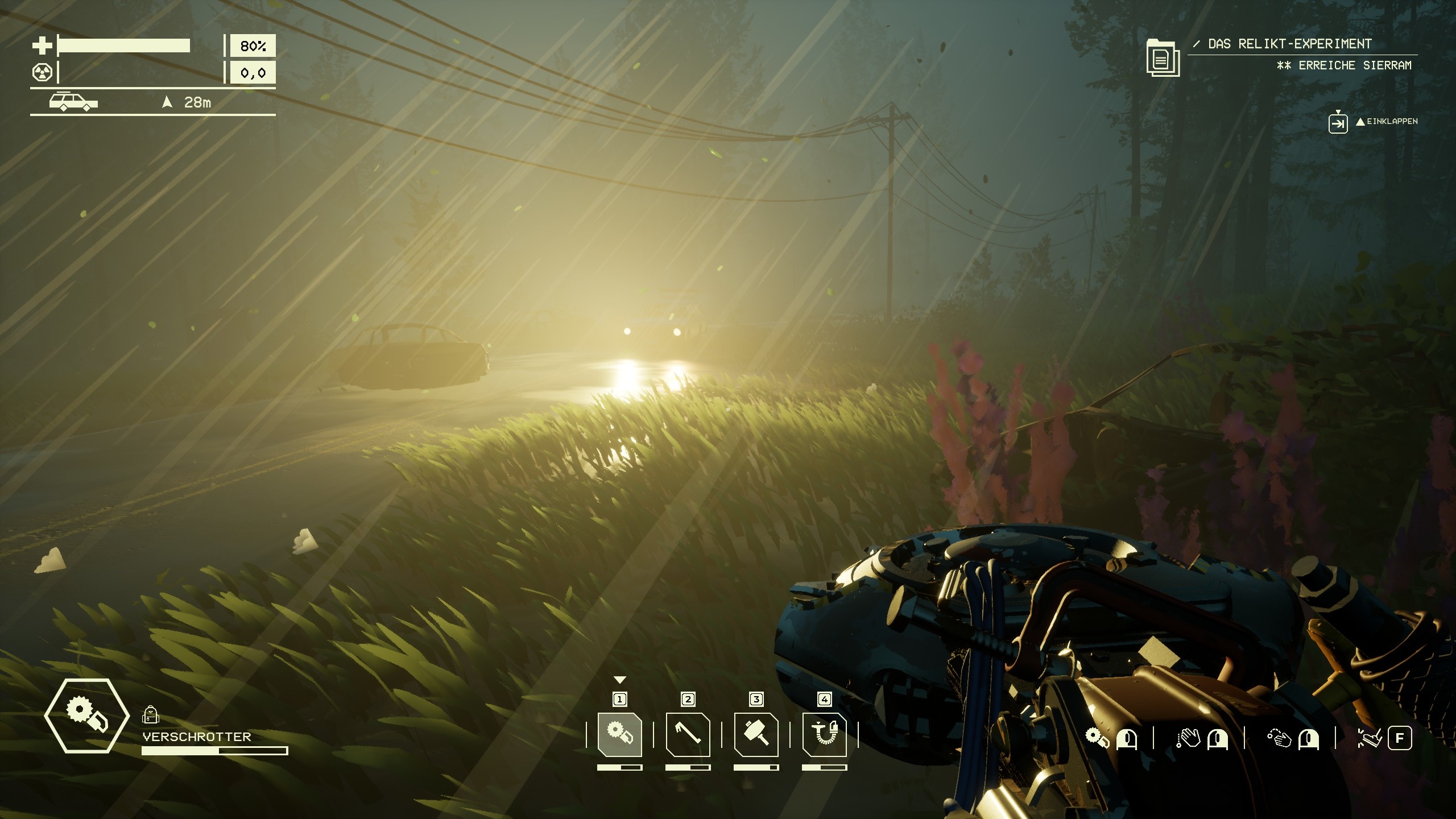
Graphics between atmospheric and “are you serious? “
Pacific Drive uses the Unreal Engine 4 to create really atmospheric impressions of a deserted and creepy zone. During the day, I see panoramas of landscapes and mountains, dilapidated power lines and towers, abandoned houses, avalanches of cars and so on. At night, I listen for every sound and am startled by suddenly glowing anomalies – and in the storm, everything is too late anyway.
On the other hand, I keep stumbling or driving over really blatant dropouts – especially the sometimes absurdly low-resolution grass and stone textures repeatedly tear away from the otherwise dense atmosphere.
But somehow this also fits in quite well with Pacific Drive – a survival game that oscillates between extremes, and not just in terms of the weather. A game that I regularly curse in the worst possible way, only to start a new round shortly afterwards, motivated to the tips of my hair. A game that survival fans will love and hate in equal measure. A real drama queen
Editor’s verdict
Pacific Drive gives me a permanent rollercoaster of emotions: The idea of the car as a companion brings a breath of fresh air to the survival genre, unlocking and tuning are incredibly motivating and I can also build my dream car visually with colors and stickers. In terms of gameplay, however, the shoe still pinches – and not just because I personally would have liked an open world.
Instead of discovering locations and treasures in the level instances, I drive through the same old areas, check out the same old hotspots and collect the same old items. Because the mysterious story and the unlockable improvements keep me entertained, I’m happy to get involved overall. However, the balancing between anomalies and level modifiers keeps putting my frustration tolerance to the test.
I recommend Pacific Drive to anyone who wants to experience survival in a different way. Like an old car, the game has its quirks. And just as an old car doesn’t make everyone happy, Pacific Drive probably won’t make everyone happy either. But I’m sure that many loyal fans will enjoy playing the game

